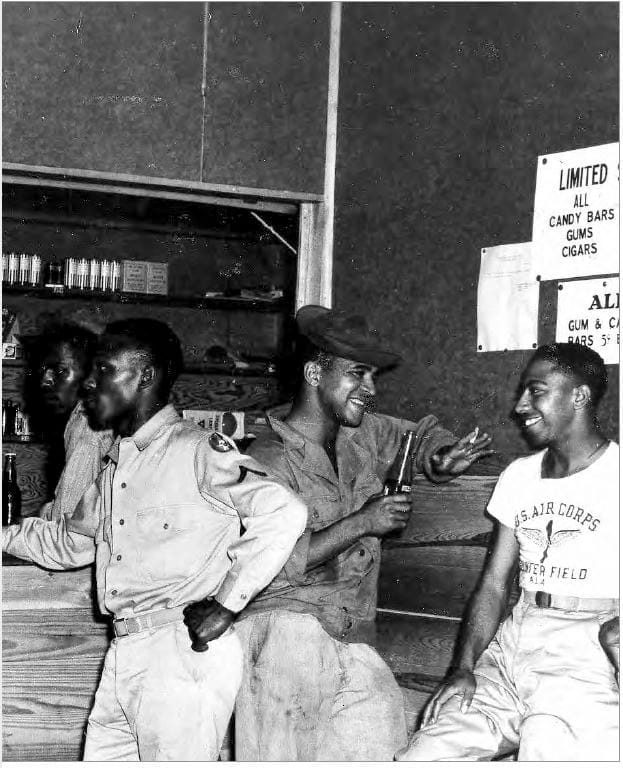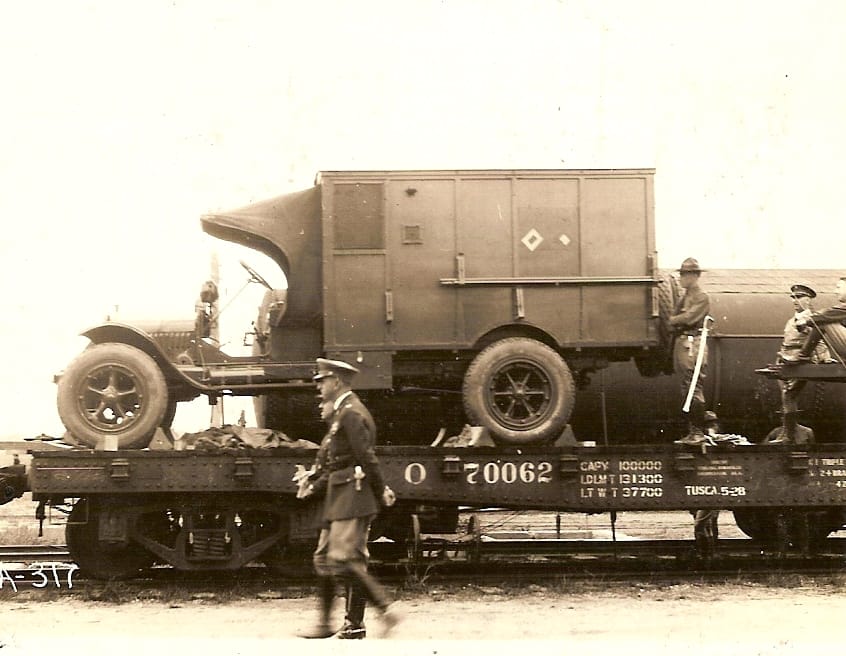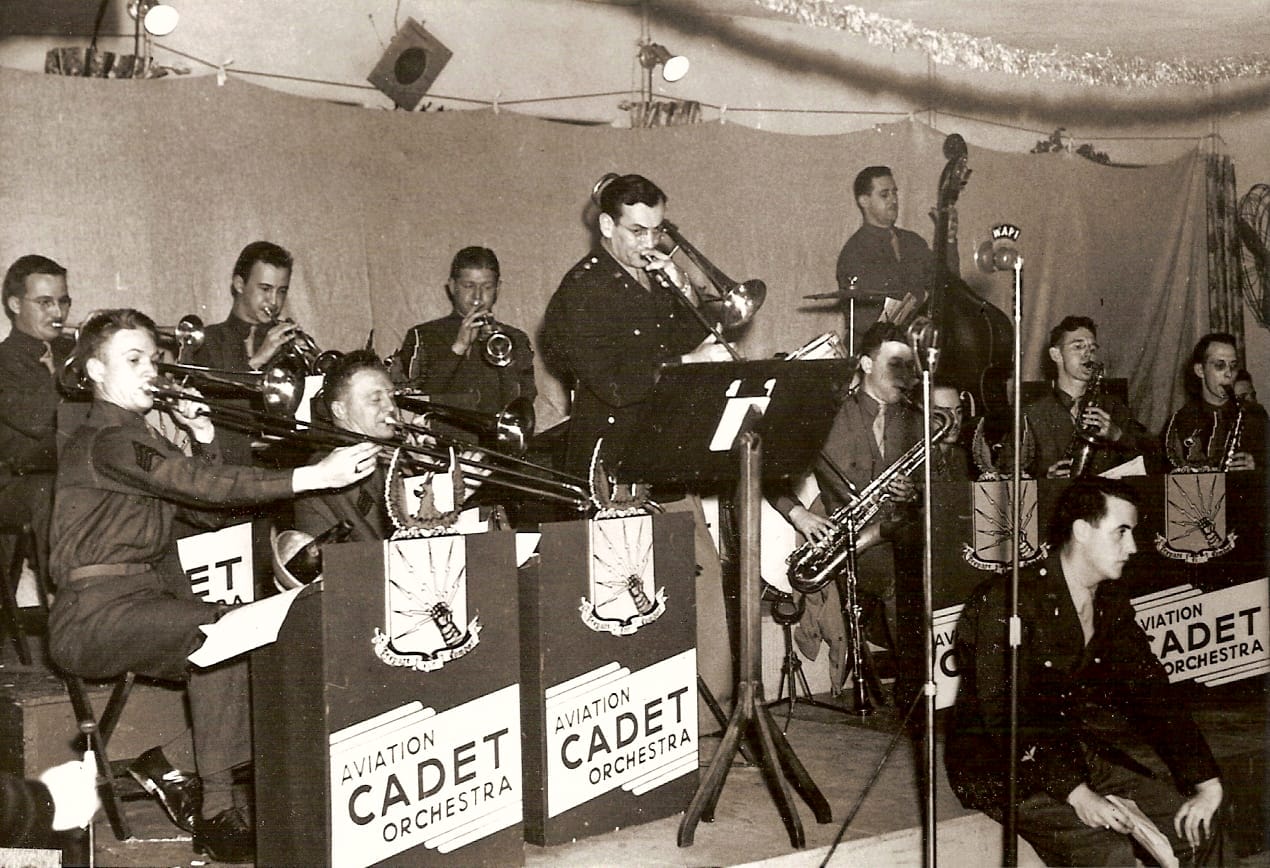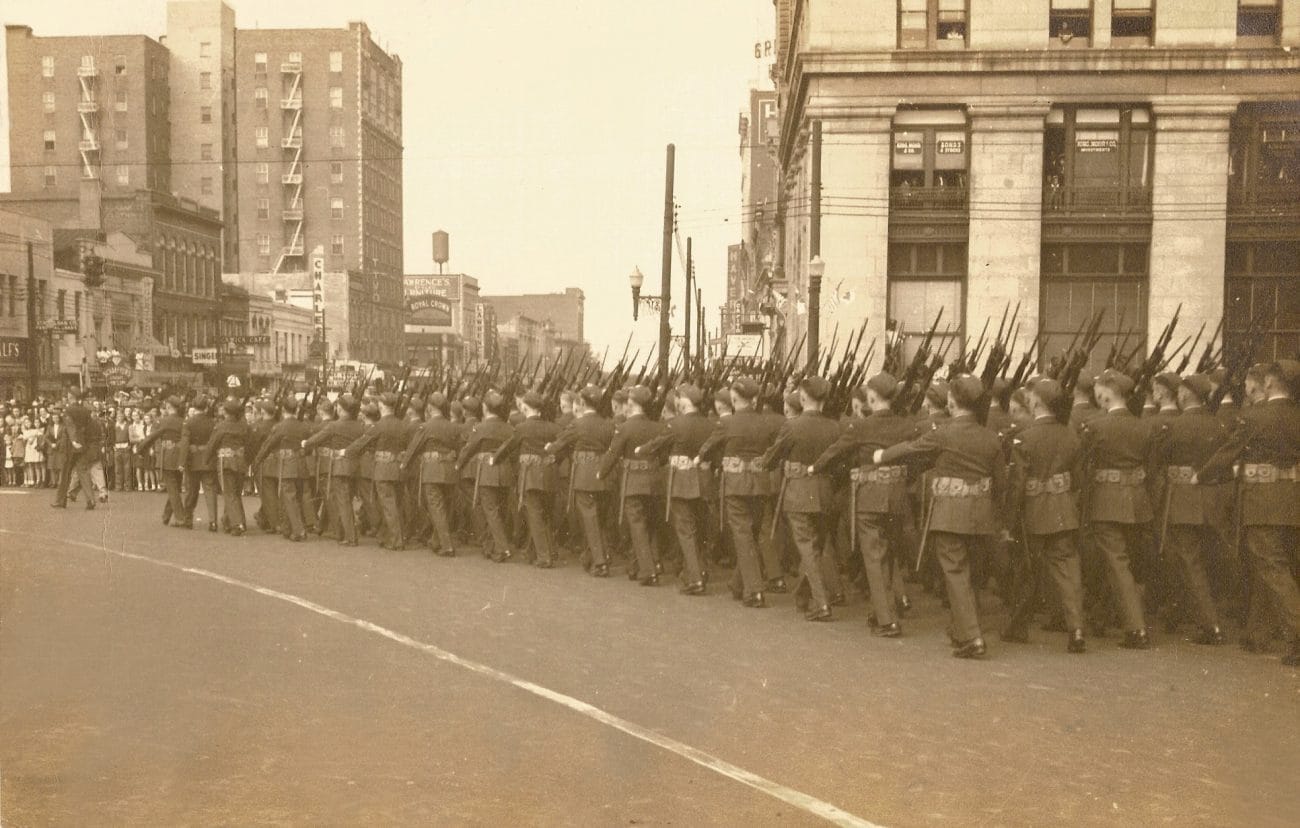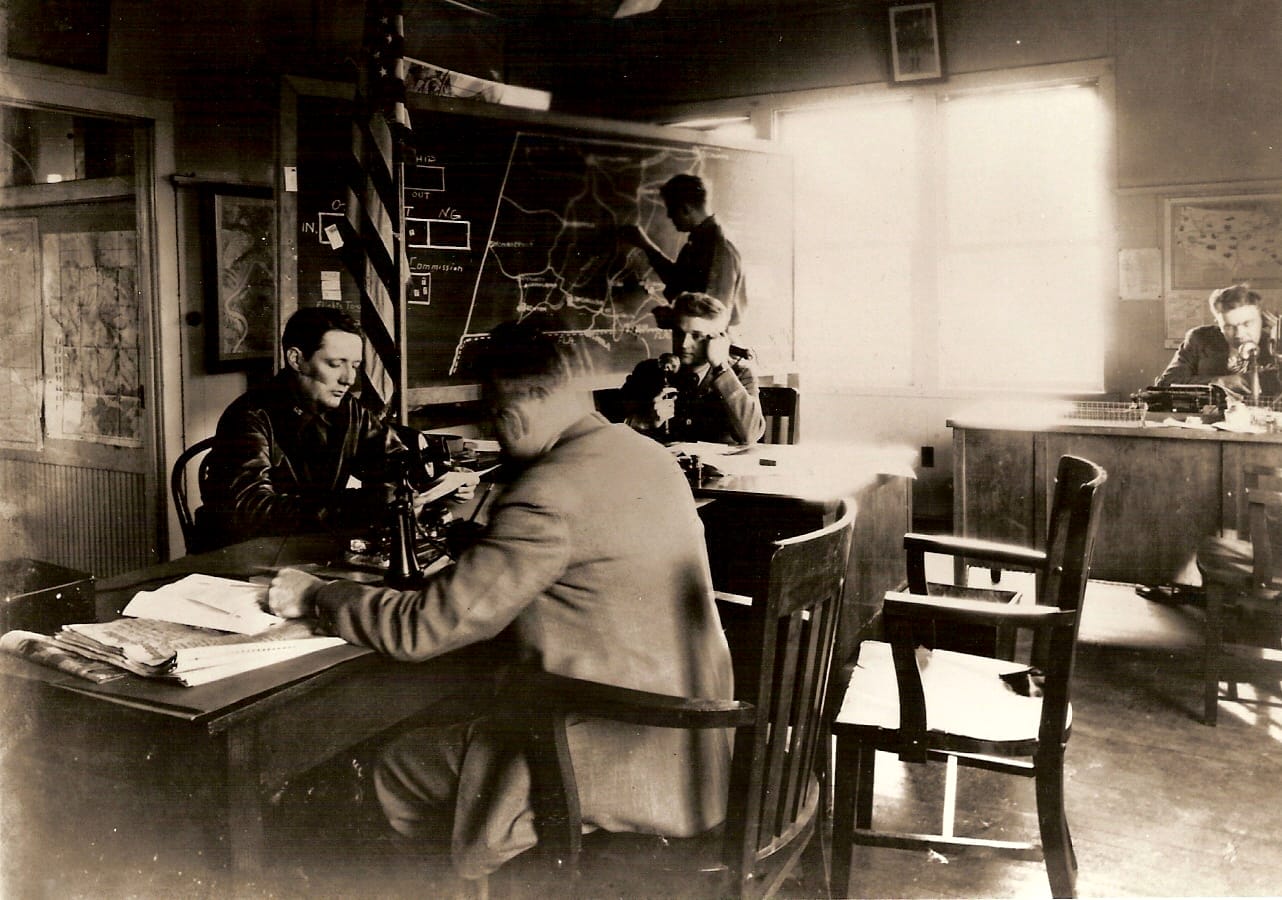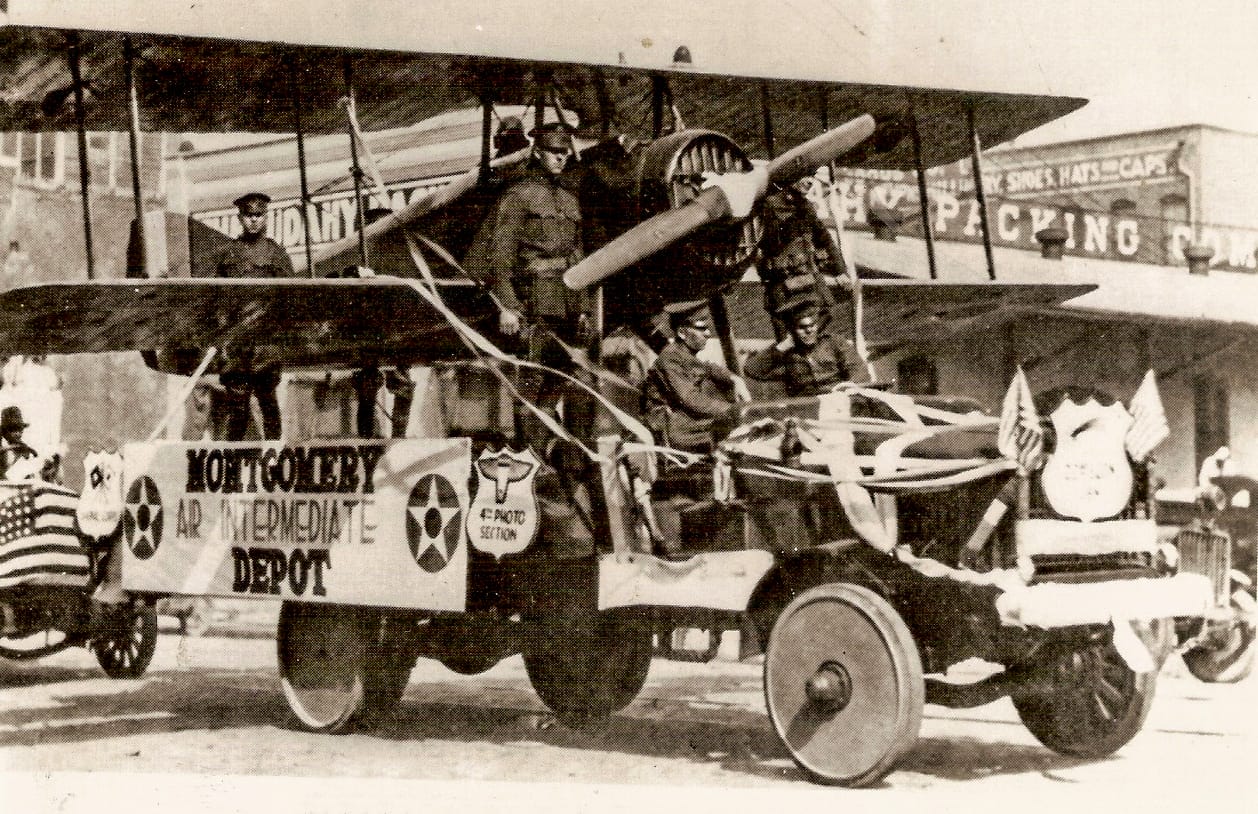Technicians work on wings in the aero repair building at Aviation Repair Depot, Montgomery, more commonly known as ARDMONT. The facility that would become Maxwell Air Force Base was an Army Air Service repair depot during World War I and continued to repair military aircraft on a smaller scale after the war ended.
Maxwell AFB and Gunter Annex Gallery
Maxwell Air Force Base began as Engine and Repair Depot 3 in 1918 in Montgomery, Montgomery County. It was built during World War I on the former site of a Wright Brothers flying school and named for Lt. William C. Maxwell, a native of Escambia County. The facility handled the aviation repair for the Army during World War I and was the center of operational training for the U.S. Army Air Forces during World War II. It has since become the main educational center for the U.S. Air Force, housing Air University. The associated Gunter Annex is also an education center for the Air Force.

